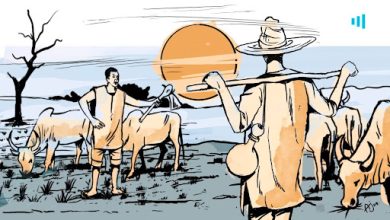Over 1,000 Africans Died Of Drowning, Dehydration During Migration – IOM Report
The IOM report pointed out that drowning and dehydration are the main cause of migrants' death in the Horn of Africa since 2014.

A report from the International Organisation For Migration (IOM) has revealed that drowning and dehydration are responsible for the death and disappearance of over 1000 African migrants since 2014 in the East and the Horn of Africa region.
During migration in 2021, drowning accounted for 64 per cent of deaths while harsh environmental conditions accounted for 5 per cent – particularly the high temperatures that all too frequently result in exhaustion and dehydration.
Most deaths and disappearances by migrants were prominently recorded by IOM from those travelling along the Eastern Corridor, which is regarded as one of the busiest migration routes in the world.
“It is used by migrants from the Horn of Africa to reach the Arabian peninsula,” the IOM said in the report.
The report said travellers on this corridor face dangers such as risky transport and asphyxiation, violence and abandonment by smugglers, limited access to medical care and detention.
In 2021, the data highlighted that most deaths took place in Djibouti (101) – between the coast and Obock or while crossing the Red Sea to Yemen -, followed by incidents that occurred in Somalia during transit to Bossaso (8).
“A key area where many migrants lose their lives on the Eastern Corridor is the particularly rough terrain leading to Obock, dubbed the ‘devil’s bathroom’ for the extreme heat, dehydration, and arduous experience commonly suffered by those who traverse it,” the report said.
“The stretch of desert from Moulehoule to Obock reaches temperatures up to 50 degrees celsius in the summer and migrants walk long distances on foot often carrying little to no drinking water.”
The IOM observed that most migrants’ intended destinations are the Kingdom of Saudi Arabia where young migrants are motivated by the desire for work, including house keepers and labourers.
In Nigeria, migration is mostly driven by economic desperation and in search of better opportunities abroad, the National Bureau of Statistics (NBS) and the International Organisation Migration (IOM) said.
However, only a small fraction eventually arrive at their intended destination.
In 2016, out of 602, 000 Nigerians attempting to reach Europe through the desert and sea, 27,000 Nigerians were reported to have lost their lives, statistics from the United Nations (UN) revealed.
Despite grave danger, tens of thousands of people try to cross the Central Mediterranean each year, the UN said.
Startling statistics
In 2021, figures from IOM alerted a 70 per cent increase of migrants compared to 2020, when 157,000 migrants were tracked on the Eastern Corridor, although not all migrants on this route eventually cross to the Arabian Peninsula.
A total of 27,693 migrant arrivals were recorded along the Southern coast of Yemen in 2021, as compared to 37,535 in 2020 and 138,213 in 2019.
On the Southern route heading from the Horn of Africa to South Africa, IOM recorded nearly 59,000 movements in 2021, predominantly by Ethiopian nationals which accounted for 70 per cent.
Historically, the migration drivers in Africa include poverty, conflict and environmental events such as droughts and floods.
According to a briefing paper by the IOM Regional Data Hub (RDH) and the Global Migration Data Analysis Centre (GMDAC), 109 migrants – of whom 17 were children – lost their lives or disappeared on the Eastern Route in 2021, up from 59 in 2020, while in 2019, 135 died or could not be accounted for.
However, IOM warned that smugglers have been cited to regularly operate boats unsuitable for sea travel and filled to overcapacity.
In order to avoid detection by marine patrol, many migrants to and from Djibouti incur additional risk by travelling during rough seas.
In March 2021, smugglers threw an estimated 80 passengers overboard from an overfilled boat carrying up to 200 people, resulting in at least 20 deaths and an unknown number of disappearances in the Gulf of Aden.
Also, in April 2021, 27 adults and 16 children drowned, when a returning boat capsized off the coast of Djibouti.
However, existing numbers of people who die in transit or lose contact with their families are underreported and many such cases are never accounted for.
In view of this information gap, IOM revealed that RDH and GMDAC recently joined efforts to strengthen the collection of verified data in close collaboration with member states.
Support Our Journalism
There are millions of ordinary people affected by conflict in Africa whose stories are missing in the mainstream media. HumAngle is determined to tell those challenging and under-reported stories, hoping that the people impacted by these conflicts will find the safety and security they deserve.
To ensure that we continue to provide public service coverage, we have a small favour to ask you. We want you to be part of our journalistic endeavour by contributing a token to us.
Your donation will further promote a robust, free, and independent media.
Donate HereStay Closer To The Stories That Matter




